
The Proven Benefits Of Kale
Posted on 31 Oct, 2020

Kale is a member of the cruciferous vegetable family, which also includes broccoli, Brussels sprouts, arugula and collard greens., according to the National Kale Day website.
Kale is a leafy green vegetable that belongs to the Brassica family, a group of vegetables including arugula, cabbage, collards, and Brussels sprouts that have gained recent widespread attention due to their health-promoting, sulfur-containing phytonutrients. Kale is generally inexpensive and easy to grow. It’s one of the simplest crops for local farmers to raise, thriving in small plots of land and personal gardens.
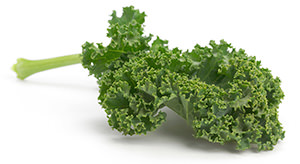 Of all leafy greens, kale has been hailed as the best of them all. Here are the scientifically proven benefits of kale that have earned it this status.
Of all leafy greens, kale has been hailed as the best of them all. Here are the scientifically proven benefits of kale that have earned it this status.
Kale Is Among The Most Nutrient Dense Foods On The Planet
This nutritional profile for Kale includes information on a full array of nutrients, including carbohydrates, sugar, soluble and insoluble fiber, sodium, vitamins, minerals, fatty acids, amino acids and more. One advantage that kale has over leafy greens like spinach, is that it is low in oxalates, substances found in some plants that can prevent minerals from being absorbed.
Kale, cooked
1.00 cup (130.00 grams)
Calories: 36
GI: very low
| Nutrient | Amount | DRI/DV | Nutrient |
| (%) | Density | ||
| vitamin K | 1062.10 mcg | 1180 | 583.6 |
| vitamin A | 885.36 mcg RAE | 98 | 48.6 |
| vitamin C | 53.30 mg | 71 | 35.1 |
| manganese | 0.54 mg | 27 | 13.4 |
| copper | 0.20 mg | 22 | 11 |
| vitamin B6 | 0.18 mg | 11 | 5.2 |
| fiber | 2.60 g | 10 | 5.1 |
| calcium | 93.60 mg | 9 | 4.6 |
| potassium | 296.40 mg | 8 | 4.2 |
| vitamin E | 1.11 mg (ATE) | 7 | 3.7 |
| vitamin B2 | 0.09 mg | 7 | 3.4 |
| iron | 1.17 mg | 7 | 3.2 |
| magnesium | 23.40 mg | 6 | 2.9 |
| vitamin B1 | 0.07 mg | 6 | 2.9 |
| omega-3 fats | 0.13 g | 5 | 2.7 |
| phosphorus | 36.40 mg | 5 | 2.6 |
| protein | 2.47 g | 5 | 2.4 |
| folate | 16.90 mcg | 4 | 2.1 |
| vitamin B3 | 0.65 mg | 4 | 2 |
Loaded With Quercetin and Kaempferol
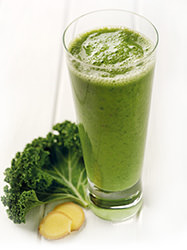 Researchers can now identify over 45 different flavonoids in kale. With kaempferol and quercetin heading the list, kale's flavonoids combine both antioxidant and anti-inflammatory benefits in way that gives kale a leading dietary role with respect to avoidance of chronic inflammation and oxidative stress.
Researchers can now identify over 45 different flavonoids in kale. With kaempferol and quercetin heading the list, kale's flavonoids combine both antioxidant and anti-inflammatory benefits in way that gives kale a leading dietary role with respect to avoidance of chronic inflammation and oxidative stress.
These substances have been studied extensively and been found to have powerful cardioprotective, blood pressure lowering, anti-inflammatory, anti-viral, anti-depressant and anti-cancer effects.
An Excellent Source Of Vitamin C
Vitamin C is an important nutrient that serves many vital functions in the body’s cells. Kale is much higher in vitamin C than most other vegetables, containing about 4.5 times much as spinach. A cup of raw kale even contains more vitamin C than a whole orange.
Improves Heart Health
Kale has a good balance of omega-3 and omega-6 fatty acids, necessary for heart health. Kale is also a good source of potassium, which according to the American Heart Association, promotes vasodiliation and lowers blood pressure.
 Kale contains bile acid sequestrants, which can lower cholesterol levels. One study found that daily consumption of kale juice for 12 weeks increased HDL (the “good”) cholesterol by 27% and lowered LDL levels by 10%.
Kale contains bile acid sequestrants, which can lower cholesterol levels. One study found that daily consumption of kale juice for 12 weeks increased HDL (the “good”) cholesterol by 27% and lowered LDL levels by 10%.
Kale can provide you with some special cholesterol-lowering benefits if you will cook it by steaming. The fiber-related components in kale do a better job of binding together with bile acids in your digestive tract when they've been steamed. When this binding process takes place, it's easier for bile acids to be excreted, and the result is a lowering of your cholesterol levels.
Steamed kale is actually 43% as potent as cholestyramine, a cholesterol lowering drug that functions in this way. Raw kale still has cholesterol-lowering ability—just not as much.
Supports Brain Health
 Kale contains 7 percent of daily iron needs. Iron helps in the formation of hemoglobin, which is the main carrier of oxygen to cells of the body and is also important for muscle and brain health. Kale’s omega-3 fatty acids are also good for brain health. According to the University of Maryland Medical Center, omega-3 fatty acids are important for brain memory, performance, and behavioral function.
Kale contains 7 percent of daily iron needs. Iron helps in the formation of hemoglobin, which is the main carrier of oxygen to cells of the body and is also important for muscle and brain health. Kale’s omega-3 fatty acids are also good for brain health. According to the University of Maryland Medical Center, omega-3 fatty acids are important for brain memory, performance, and behavioral function.
Sulphorophane, like kale’s other antioxidants, has anti-inflammatory properties that, according to an article in Neuroscience Letters, may help cognitive function, especially after brain injury.
Detoxifies
 Kale is now recognized as providing comprehensive support for the body's detoxification system. The isothiocyanates (ITCs) made from kale's glucosinolates have been shown to help regulate detox activities in our cells. In addition, the unusually large numbers of sulfur compounds in kale have been shown to help support aspects of detoxification that require the presence of sulfur.
Kale is now recognized as providing comprehensive support for the body's detoxification system. The isothiocyanates (ITCs) made from kale's glucosinolates have been shown to help regulate detox activities in our cells. In addition, the unusually large numbers of sulfur compounds in kale have been shown to help support aspects of detoxification that require the presence of sulfur.
One Of The World’s Best Sources Of Vitamin K
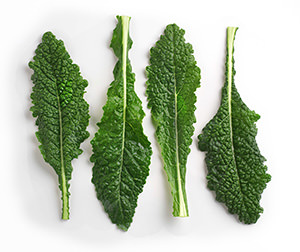 Kale is a spectacular source of vitamin K (a single raw cup contains 7 times the recommended daily amount).
Kale is a spectacular source of vitamin K (a single raw cup contains 7 times the recommended daily amount).
According to the Linus Pauling Institute of Oregon State University, vitamin K is a key nutrient for helping regulate our body's inflammatory process and is an essential factor in blood clotting. Lack of it can cause hemorrhages.
Great Cancer-Fighting Abilities
Kale's risk-lowering benefits for cancer have recently been extended to at least five different types of cancer. These include cancer of the bladder, breast, colon, ovary, and prostate.
Kale's cancer preventive benefits have been clearly linked to its unusual concentration of two types of antioxidants, namely, carotenoids and flavonoids.
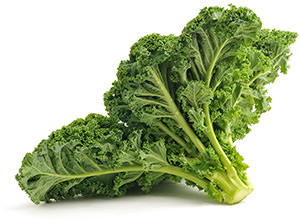 Of the carotenoids, lutein and beta-carotene are standout antioxidants in kale. Researchers have closely followed the passage of these two carotenoids in kale and have found that they are key nutrients in the protection of our body from oxidative stress, one of the leading causes of cancer.
Of the carotenoids, lutein and beta-carotene are standout antioxidants in kale. Researchers have closely followed the passage of these two carotenoids in kale and have found that they are key nutrients in the protection of our body from oxidative stress, one of the leading causes of cancer.
Helps Control Diabetes
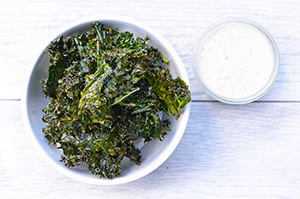 With one cup of cooked kale containing 10 percent of daily fiber needs, this leafy green can be helpful for those managing diabetes. A meta-analysis of studies of the relationship between fiber and blood glucose levels published in The Journal of the American Board of Family Medicine found that increased fiber intake can reduce blood glucose levels.
With one cup of cooked kale containing 10 percent of daily fiber needs, this leafy green can be helpful for those managing diabetes. A meta-analysis of studies of the relationship between fiber and blood glucose levels published in The Journal of the American Board of Family Medicine found that increased fiber intake can reduce blood glucose levels.
Kale’s rich sulfur content can also help with diabetes. Sulfur is extremely important for glucose metabolism, helping to decrease the weight gain and the risk of diabetes. A study published in the Journal of Chromatology B found that kale contained more glucoraphanin, the precursor to sulfur, than broccoli.
Very High In Beta-Carotene
Kale is high in beta-carotene, an antioxidant that the body turns into vitamin A. For this reason, kale can be an effective way to increase your body’s levels of this very important vitamin.
High in Lutein and Zeaxanthin
Kale contains large amounts of lutein and zeaxanthin, carotenoid antioxidants that reduce macular degeneration and cataracts.
Aids Weight Management And Digestion
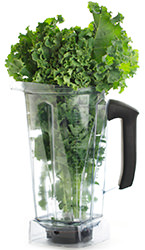 With just 33 calories per cup, kale is a popular diet food. It can help in weight loss and weight management because its high fiber content helps to keep you fuller longer. Kale’s magnesium content could also be helpful in this regard as it is one of the minerals that most people are deficient in, but is extremely important for helping the body manage stress and maintain optimal digestion.
With just 33 calories per cup, kale is a popular diet food. It can help in weight loss and weight management because its high fiber content helps to keep you fuller longer. Kale’s magnesium content could also be helpful in this regard as it is one of the minerals that most people are deficient in, but is extremely important for helping the body manage stress and maintain optimal digestion.
Good For Bone Health
The National Osteoporosis Foundation listed kale as one of their “good-for-your-bones foods” because of its calcium content. Calcium aids in bone loss prevention, as well as maintaining a healthy metabolism and alkaline environment in your body. In fact, one cup of cooked kale has about the same amount of calcium as one cup of cow’s milk, according to an article published in The American Journal of Clinical Nutrition.
Risks Of Eating Kale
As good as kale is for you, you shouldn’t eat it in excess. Eating copious amounts of leafy greens can cause bloating, gas and constipation, according to The Washington Post. Additionally, people taking blood thinners should watch out because kale’s high vitamin K content promotes clotting.
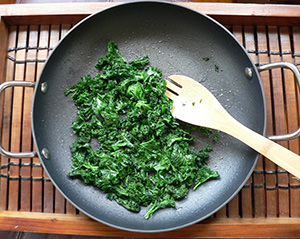 Even though in small amounts, kale still contains oxalates, which are sometimes associated with kidney stones and gallstones, World’s Healthiest Foods recommends chewing well and relaxing between meals to minimize any problems with oxalates.
Even though in small amounts, kale still contains oxalates, which are sometimes associated with kidney stones and gallstones, World’s Healthiest Foods recommends chewing well and relaxing between meals to minimize any problems with oxalates.
In January of 2014, The New York Times published an opinion piece discussing possible connections between kale and other cruciferous vegetables and thyroid problems. Since then, kale has come under suspicion for being goitrogenic (a substance that could cause swelling or dysfunction of the thyroid gland). Recent studies, however, have shown that kale and its cruciferous cousins do not interfere with thyroid functioning in healthy people. Even those with hypothyroidism can eat as much kale as they want if it is cooked, according to an article in The Permanente Journal.
A real risk with kale is pesticide consumption. In 2014 and 2015, the Environmental Working Group listed kale on its Dirty Dozen Plus list of most contaminated foods. This means that you should buy organic kale if possible, and be sure to wash what you do buy thoroughly.
Enjoying Kale
There are many ways to incorporate kale into your diet. You can blend it into smoothies, soups or sauces, sauté it with other vegetables in a stir-fry, massage it with a bit of olive oil and sea salt for the base of a green salad, bake it into frittatas, lasagnas or burgers and, of course, make kale chips! You can use kale the same way you would use any other green.

Photo Credits
Great Titles To Consider

by Del Sroufe

by Kris Carr

by Michael Pollan

by Katrine Van Wyk

 Why Eggs Are Considered A Superfood
Why Eggs Are Considered A Superfood How Long Before Bedtime Should I Have My Last Coffee?
How Long Before Bedtime Should I Have My Last Coffee? Make Your Own Quick And Easy No-Bake Protein Bars
Make Your Own Quick And Easy No-Bake Protein Bars Flu Fighting Foods
Flu Fighting Foods










